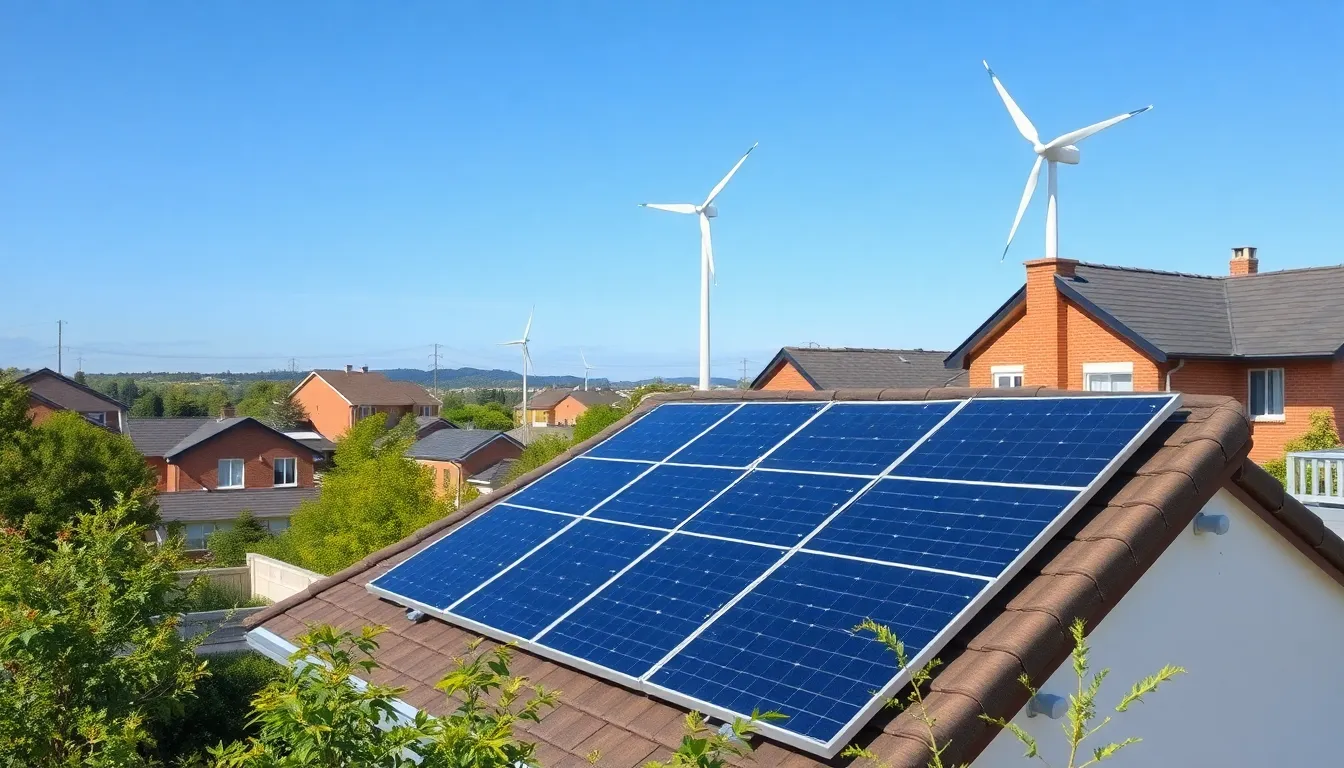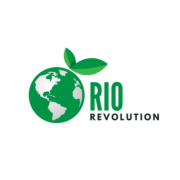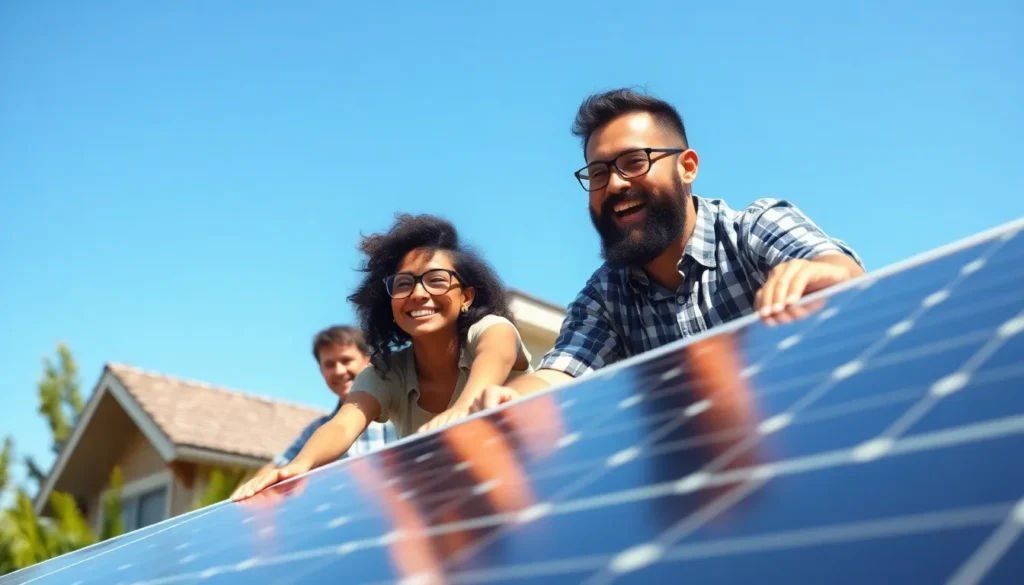In a world where the sun shines brighter than your neighbor’s new car and the wind whispers sweet nothings through the trees, green power energy is stealing the spotlight. It’s not just about saving the planet anymore; it’s about harnessing nature’s free gifts to fuel our lives. Who wouldn’t want to power their home with the energy equivalent of a fresh breeze or a sunny day?
Green Power Energy Reviews
Green power energy leverages renewable resources like sunlight, wind, and water. Clean energy sources contribute significantly to reducing greenhouse gas emissions. Focusing on sustainability, these resources offer a long-term solution for energy consumption.
Solar energy systems convert sunlight into electricity efficiently. Many homeowners have installed solar panels, benefiting from reduced utility bills and tax incentives. Wind energy provides another reliable option, with wind turbines generating power in areas with consistent winds.
Hydropower, derived from flowing water, accounts for about 16% of global electricity generation. It combines efficiency and reliability, making it a staple in the energy sector. Moreover, geothermal energy taps into the Earth’s internal heat, available nearly anywhere on the planet.
The appeal of green energy spans economic and environmental aspects. Utilization of renewable resources helps create jobs in installation and maintenance. Transitioning to green power energy enhances energy independence, reducing reliance on fossil fuels.
Adopting green power energy not only leads to cleaner air but also promotes healthier communities. Improved air quality results in better public health outcomes. Communities that embrace green energy often experience economic growth, driving local investment and innovation.
Green power energy options are increasingly accessible to households and businesses. Programs and incentives enable users to shift toward greener solutions. By exploring these alternatives, individuals can play a role in combating climate change, securing a sustainable future.
Types of Green Power Energy

Green power energy comes in various forms, drawing on natural resources that promote sustainability. Each type plays a crucial role in generating clean electricity and reducing environmental impact.
Solar Energy
Solar energy harnesses sunlight, converting it into electricity through photovoltaic cells. This technology has made solar panels popular among homeowners seeking to lower utility costs. Incentives, such as tax credits, make installation more affordable. As advancements occur, efficiency improves, enabling greater energy capture. Many households now take advantage of net metering, allowing them to sell excess energy back to the grid. This process not only saves money but also supports cleaner energy transitions.
Wind Energy
Wind energy relies on turbines that capture kinetic energy from wind. Turbines typically find placement in open areas with consistent wind patterns, maximizing output. Many countries report significant investments in wind farms, with installed capacity significantly growing. Wind energy projects create jobs in construction and maintenance, boosting local economies. Wind power has the capacity to provide substantial electricity, often reaching around 20% of total generation in some regions. By generating clean electricity, wind energy reduces reliance on fossil fuels, leading to lower emissions.
Hydropower
Hydropower uses flowing water to produce electricity, contributing around 16% to global electricity generation. Dams typically serve as the primary infrastructure, capturing the potential energy of water flow. The technology allows for consistent energy production, making it a reliable option for baseload power. Many regions benefit from hydropower’s ability to provide energy storage and manage peak demands. Projects supporting the environment often focus on fish-friendly technologies, ensuring ecosystems remain intact. In sum, hydropower serves as a critical component of the renewable energy mix.
Benefits of Green Power Energy
Green power energy offers numerous advantages, impacting both the environment and economy. Utilizing renewable resources, it supports a sustainable future for everyone.
Environmental Impact
Green power energy significantly reduces greenhouse gas emissions. Solar, wind, and hydropower harness nature’s elements, leading to cleaner air and water. Communities adopting these energy sources often notice improved public health. Cleaner air translates to fewer respiratory issues and other health problems. Additionally, renewable energy helps preserve ecosystems, reducing the negative impact on wildlife habitats. By prioritizing green power, societies contribute to combating climate change effectively. The shift toward renewable energy fosters biodiversity, protecting various species and their natural environments. Studies show that communities with higher green energy usage experience lower pollution levels.
Economic Advantages
Green power energy presents compelling economic benefits. Job creation in installation, maintenance, and technology development drives local economies. Many regions report significant employment growth due to investments in renewable energy. Reduced utility bills enhance affordability for households and businesses, allowing reinvestment into other areas. Tax incentives often accompany green energy installations, providing further financial relief. Long-term savings from lower energy costs help families and companies thrive. Additionally, green power enhances energy independence, lessening reliance on imported fuels. Economies utilizing renewable resources can expect increased stability, as they become less susceptible to global price fluctuations.
Challenges in Green Power Energy Adoption
Adopting green power energy faces several challenges that hinder its widespread implementation. Infrastructure plays a crucial role in this transition.
Infrastructure Issues
Existing energy grids often lack the capacity to integrate renewable sources efficiently. Upgrading these systems requires significant investment and time. Many regions still depend on aging infrastructure that fails to support new technologies. Costs associated with retrofitting or building new facilities can deter utilities from pursuing green options. Additionally, the geographic distribution of renewable resources presents challenges for connecting these sources to consumers. Without proper infrastructure development, the potential benefits of green power diminish.
Policy and Regulation
Policies surrounding green power energy significantly influence adoption rates. Regulatory frameworks can either encourage or stifle investment in renewables. Many regions experience inconsistent regulations that create uncertainties for investors. Some policies may provide incentives, while others impose barriers, making the landscape complex. Clear and supportive regulations are essential for fostering growth. It’s crucial for governments to establish long-term strategies that promote green energy, ensuring stability in the market. When proper policies support green initiatives, communities gain access to cleaner energy options.
Green Power Energy Reviews by Consumers
Consumer feedback regarding green power energy highlights diverse experiences, showcasing both satisfaction and challenges in utilizing renewable energy sources.
Positive Experiences
Many consumers praise the substantial savings in utility bills after adopting solar panels. Deployment of photovoltaic systems has helped households significantly cut monthly expenses. Tax incentives further enhance these financial benefits, encouraging users to invest in renewable technologies. Consumers report feeling empowered by contributing to environmental sustainability through their choices. Positive testimonials often mention the natural energy sources, leading to cleaner air and a healthier community. Communities embracing wind energy frequently appreciate job creation linked to turbine installations and maintenance. Government programs encouraging renewable energy adoption often receive accolades due to their role in simplifying the transition for households and businesses.
Negative Experiences
Some consumers experience frustration with the initial costs of green power energy systems. High upfront investments can deter individuals from committing to renewable resources despite long-term savings. Maintenance concerns arise, with some claiming repairs or replacements can become costly. Additionally, inconsistent energy production during off-peak seasons sometimes leads to dissatisfaction. Regulatory hurdles and unclear policies may create anxiety among potential investors, complicating the adoption process. Complaints about aging infrastructure hindering the efficiency of integrating renewable sources appear frequently as well. Negative experiences often highlight the reliance on grid systems that may not accommodate emerging technologies effectively.
Future Trends in Green Power Energy
Technological advancements in green power energy continue to evolve, shaping the future landscape of energy production. Solar power generation becomes increasingly efficient with the introduction of bifacial solar panels, which capture sunlight from both sides. Emerging energy storage solutions, such as solid-state batteries, promise to enhance the viability of renewable sources by providing reliable power during peak demand periods.
Wind energy also undergoes significant transformation as developers focus on offshore wind farms with larger turbines capable of generating more electricity. These advancements may expand wind’s contribution to regions where land-based projects face limitations. As countries invest in grid modernization, integrating diverse energy sources becomes more feasible and efficient.
Hydropower innovation includes small-scale projects that supply energy to local communities, minimizing ecological disruption while promoting sustainability. Utilizing run-of-the-river technologies proves advantageous, as it reduces environmental impacts and maintains river ecosystems.
Governments increasingly implement policies that prioritize renewable energy development, reflecting a global commitment to reducing greenhouse gas emissions. Incentives and subsidies specifically targeting green technologies encourage more homeowners and businesses to switch to renewable sources. As community-driven renewable energy projects gain traction, local investments bolster economic stability and resilience.
Moreover, the rise of electric vehicles (EVs) complements green energy trends, as vehicle owners seek charging solutions powered by renewable sources. Municipalities that install EV charging stations sourced from green energy experience dual benefits, promoting cleaner transportation while supporting local green initiatives.
Industry collaborations among energy companies, tech firms, and governments foster innovation, driving advancements in smart grid technology and enhanced energy efficiency. Collectively, these trends will transform the energy landscape into a more sustainable and resilient framework, paving the way for future generations.
Conclusion
Embracing green power energy isn’t just a trend; it’s a necessary shift towards a sustainable future. The benefits extend beyond environmental preservation to include economic growth and energy independence. As technology advances and policies evolve, the potential for renewable energy sources continues to expand.
While challenges remain in infrastructure and regulations, the positive impact on communities and public health is undeniable. Individuals and businesses can play a vital role in this transition by exploring available green energy options. By choosing renewable sources, they contribute to a cleaner planet and a more resilient energy landscape for generations to come.

